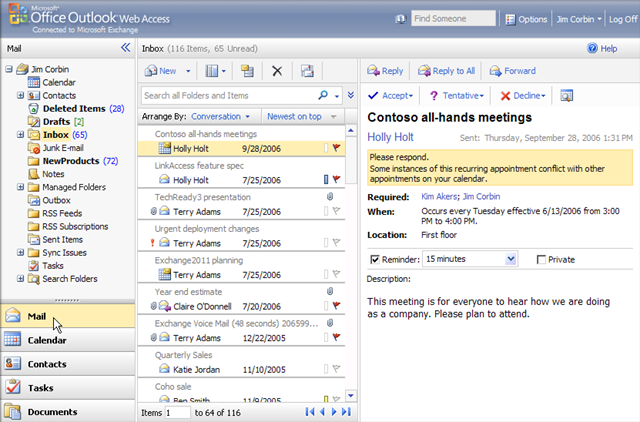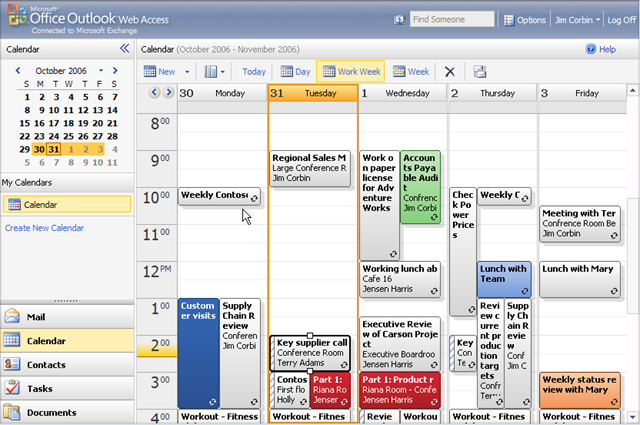[edited 2009.01.15 to add link to DDJ’s announcement]
2008 was quite a year, full of landmark events that were certainly historic, if not always welcome.
If I had to pick one technology-related highlight from the past year, it would be this: A notable inflection point in the ongoing shift from traditional media to the web. Given that that tide is still in progress, why single out 2008? I think we’ll look back at 2008, especially the fourth quarter, as a turning point when the web became an A-list media outlet and first started to beat up, and even replace, major legacy competitors in newspapers, technical magazines, movies, and TV. An inflection point, if you will, where the web clearly stopped being the pencil-necked upstart, and visibly emerged as the new gorilla flexing its advertising-revenue-pumped-up muscles and kicking sand on the others.
In 2008, and particularly in the last month, the web began to outright replace some existing newspapers and technology and programming magazines.
- December 2008: The first two major city newspapers go web-only or web-mostly. The Detroit News and The Detroit Free Press announced truncated print editions and reduced print delivery. Newspapers in several other cities seem likely to follow fairly soon.
- As of January 2009: PC Magazine is going “digital only.” After the January issue, the print magazine will disappear. Instead, the content will appear exclusively on the web.
- As of January 2009: Dr. Dobb’s Journal is permanently suspending print publication and going web-only. Some of the content will be available as a new “Dr. Dobb’s Report” section of InformationWeek. My Effective Concurrency column will continue, and I’ll continue to blog when new columns go live on the web, so if you’re reading the column via this blog nothing will significantly change for you.
As of next month, the only major technical programmer’s trade magazines still available in print, that I know of, are platform- and technology-specific ones like asp.netPRO and MSDN Magazine — and even those increasingly feature online-only content. For example, from MSDN Mag’s January 2009 editor’s note:
As we continue to grow our coverage to keep pace with the rapidly expanding set of technologies, we will often offer content exclusively online at msdn.microsoft.com/magazine. So please check in frequently!
Gotta love RSS (and Atom etc.): Every text feed is like a magazine or newspaper column, every blogger a columnist. Every audio/video podcast feed is like a radio or TV series, or a radio station or TV channel. And our feed reader is the new magazine/newspaper, as we subscribe to columnists to make our personal custom newsmagazine. But RSS readers, along with RSS-consuming clients like iTunes, are more — they’re our personal selection, not only of the columns we want to read (on whatever topics we want, including the funnies section), but also of the media we want to hear and watch. It’s increasingly our way to choose the text, audio, and video we want all together. Who knew that a large chunk of the coming media convergence would come in the shape of RSS readers?
And other media are feeling the pressure from Dr. Web, the new gorilla:
- This week (late December 2008), even cable operator Time Warner pushed web delivery for TV. Time Warner has had various contract disputes with Viacom and some local stations. But as part of the dispute:
- Time Warner will respond to Viacom’s advertisement, [Time Warner spokesman] Mr. Dudley said, by highlighting the availability of television content on the Internet.
“We will be telling our customers exactly where they can go to see these programs online,” Mr. Dudley said. “We’ll also be telling them how they can hook up their PCs to a television set.”
- During October-December 2008, Netflix’s Watch Instantly has started to turn into a juggernaut. It’s interesting enough that you can watch 12,000+ movies and TV shows streamed over the net to your PC at high quality. As of October 2008, you can get them on your Mac. As of November 2008, on your Xbox. As of December 2008, on your TiVo. As noted in one recent article:
- “It’s a good strategic move,” said Andy Hargreaves, an analyst with Pacific Crest Securities. “Netflix sees the world will go digital, no matter what they do. They realize there is more to be lost by waiting than doing it early.”
And I won’t even get started on SaaS: hosted rich GUI apps served up on the web, for example the December 2008 (again) announcement about Office Online.
Yes, don’t forget 2008, especially December 2008: The month the first major newspapers moved mostly to the web and abandoned print at least partly; the month that PC Magazine and Dr. Dobb’s suspended print publication and went web-only; the month Netflix Watch Instantly arrived in the living room on TiVos after hitting Xboxes a fortnight before; the month cable provider Time Warner threatened to tell people to watch TV on the net; and the month even Microsoft announced their intent to deliver significant Office web applications.
I for one welcome Dr. Web, our new Gorilla and media overlord!
Besides, what choice do I have?





